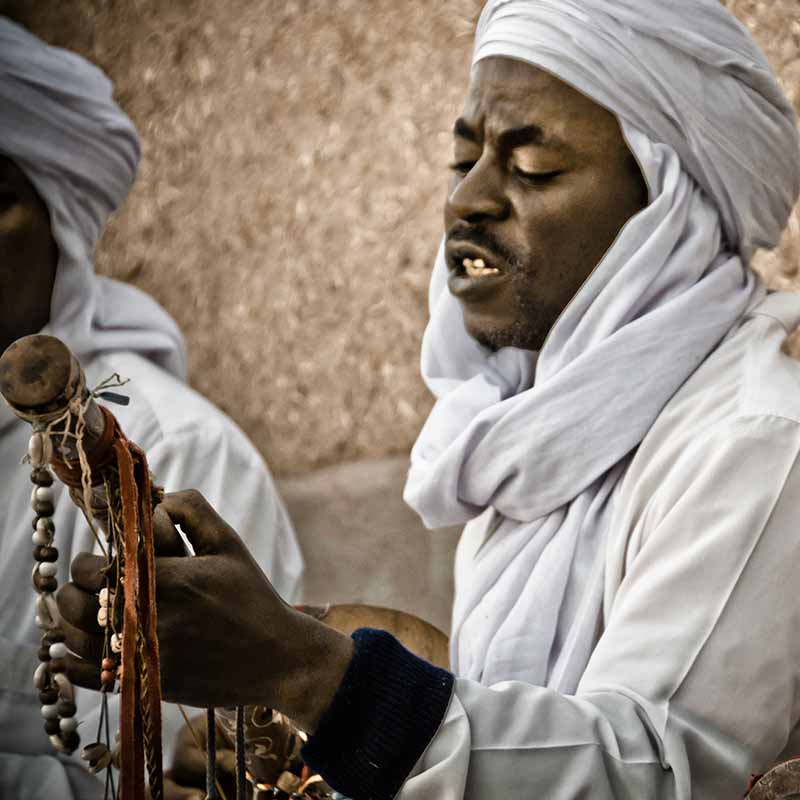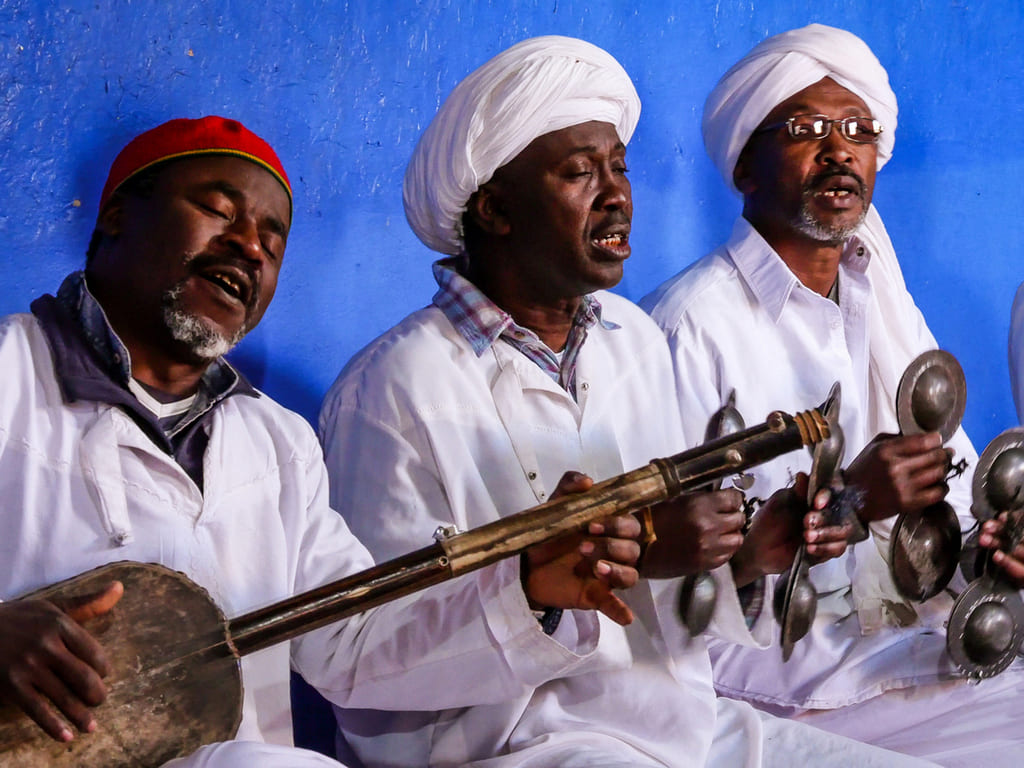ABOUT MERZOUGA
Merzouga is a small village in the south of Morocco. It’s famous for its close proximity to the Sahara Desert and Erg Chebbi, a large collection of impressive sand dunes. Some rise up to 150M in height from the desert floor!
For centuries, Merzouga, Morocco, remained relatively unchanged. The epic dunes of the Sahara Desert ebbed and flowed like waves trapped in slow motion. Nomadic Berber tribes roamed with their camels to known watering holes and grasslands.
And the red, dusty air of the Sahara Desert cast a warm glow over the wild landscapes.The town sits about 31 miles (50 km) from the border with Algeria and about an 8half-hour drive from the city of Marrakech.
Merzouga is a city with a reputation among thrill-seekers. It’s been dubbed “a wonderland of sand” and a “desert theme park” due to the adrenaline-pumping adventures and epic landscapes that surround it. And shockingly, amongst all of the sand, dust, and dry desert air, Merzouga is also home to the most significant natural underground body of water in Morocco.
The land around the town was once a lush, tropical jungle, and as the landscape was swallowed up by the world’s largest desert, it became home to some of the most impressive sand dunes in the world. It eventually became a transit point for Bedouin and Berber merchants and even acted as a fort during the French colonial rule between 1916 and 1932.
THINGS TO DO !
There are so many things you can do to make your visit to this village more memorable. Visiting this Sahara desert in Morocco on a one-day trip would be insufficient to explore all the fascinating places. One of the most exciting ways to enjoy your Merzouga visit is to try the camel trips before the sunset. This exciting leisure activity is available in the nearby sand dunes of Erg Chebbi. Many travelers find it very amusing to hire a 4×4 vehicle and take it around the dunes. Camping and sand skiing in Merzouga can be very enjoyable as well. The local people of this village are also a great attraction to many international tourists. The foreign visitors love to see how the Berber lives their daily life. Some travelers also have a great time with the villagers as they dine and drink mint tea together. They feel more like a guest rather than a tourist. Such a valuable experience is hard to find elsewhere.
Spend a night in a traditional Berber or Luxury desert camps. Enjoy the authentic desert experience, listen to local music, savor a traditional Moroccan dinner, and sleep under the stars.
If you’re seeking an adrenaline rush, you can rent quad bikes and ride through the desert, covering more ground and experiencing the dunes in a different way.
Discover the Marzouga Erg Chebbi desert in a 4WD vehicle, It is the best way to explore the attractions around the high dunes such as seasonal lake Dayet Srij, Hassi Labied oasis, fossil mines factory in M’ifis, meet Berber nomad families and get to know their cultures and traditions, listing to the Gnawa music in the village of black people… Enjoy a beautiful panoramic view of this beautiful Sahara desert.
Sandboard is similar to a snowboard, but instead of snowy pistes, you slide down sand dunes on a specially designed board. It’s a popular activity in sandy deserts such as the Sahara, where the soft and smooth sand provides an ideal gliding surface.
Embark on a camel trek into the heart of the dunes, guided by local experts. Riding a camel across the vast desert landscape is a quintessential Sahara experience, especially during sunset and sunrise.
For those seeking a more adventurous experience, off-road excursions in 4×4 vehicles can be arranged to take you across the vast desert, visiting hidden gems and unspoilt landscapes.
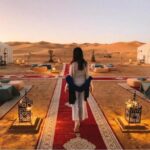
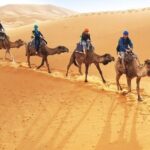
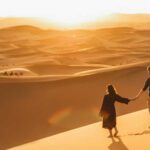
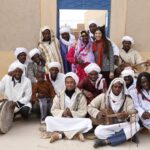
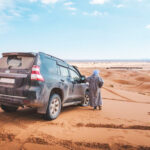

Visit Khamlia Village
The tiny village of Khamlia, inhabited by less than 150 people, is now known all over the world. According to some sources, Khamlia derives from the Arabic term Khamila which designates a soil with an abundance of vegetation. Here there are many descendants of the slaves led, through the famous Timbouctou, from Senegal, Sudan and Mali, who brought this hypnotic music with them. Music capable of inducing a state of trance, thanks to low and rhythmic sounds, songs and the rhythm of the clapping of hands. The Berbers of Merzouga have always defined Khamlia “the village of blacks”. A true cross-section of Black Africa that managed to survive in the heart of the Sahara. There are no hotels here but you can visit it if you take the Merzouga desert tour. The village is in fact located about 7 km away, surrounded by absolute nothingness and close to the majestic Erg Chebbi dunes.
In fact, this village is supported by tourism because in some houses of the village you can enjoy Gnaoua music and dances while sipping a delicious mint tea and above all learn about the traditions, customs and lifestyle of the Gnaoua.
WHO ARE GNAWA?
For centuries black Africans from the Gnawa tribe, originating from sub-Saharan countries such as The Sudan, Mali and Niger, were forcibly moved from their homelands across the Sahara to Morocco as part of the worldwide slave trade. Shackled in chains as they crossed the desert, they sang to soothe and found a mindfulness in the rhythmic chanting and clanking of the chains. The etymology of the word gnaoua or gnawi is not yet clearly established. For Maurice Delafosse there would exist a phonetic similarity with the Berber ”akal-n-iguinaouen” which means land of blacks.
SLAVERY AND BLACK GUARD
Natives of this old sub-Saharan empire, the first Gnawas were brought, it is thought, in the sixteenth century by Sultan Ahmed el Mansour, 3rd Saadian sultan nicknamed El Dehbi, the Golden, in reference to a glorious campaign conducted on Timbuktu from where he brought back a significant quantity of gold. He also took 12,000 slaves from Bilal el Sudan, the land of the blacks. This workforce worked in the sugar cane plantations of the Berber country Haha near Essaouira and made strain in this region. Some were enlisted in the army and formed what became the Sultan’s Black Guard.
Infact slaves played a big part in Moroccan history and some of the most powerful kasbahs such as Telouet in the High Atlas were built by their hard labour. Telouet Kasbah is situated next to an ancient salt mine and it is said that 1 kilo of gold was equal to 1 kilo of salt and 2 slaves. Long before the caravans reached the High Atlas though, they had to cross through the desert town of Sijilmasa. This was the Mecca of the Maghreb and a vital trade post on the Trans-Saharan route. Slaves were forced to toil in this area as shepherds and servants, and this practice continued for generations.
Although Islam really started to take a hold in Morocco in the 11th century it took a long time to find its way through the wild and inhospitable terrain and wasn’t fully imposed until the 18th century. As slavery is forbidden in Islam, it was at this point that these slaves in Sijilmasa, today known as Rissani, were granted freedom.
The emancipated slaves had retained knowledge of their culture, customs and traditions to such an extent that they were still able to make their musical instruments such as the Guembri and Hajhuj from the intestines and skin of goats and wood from the desert Tamarisk tree. They revived their spiritual music but changed its form to one of gratitude to God and the Prophet Mohammed. Gnawa music became a music of thanksgiving for freedom, and nostalgia for the homeland.

